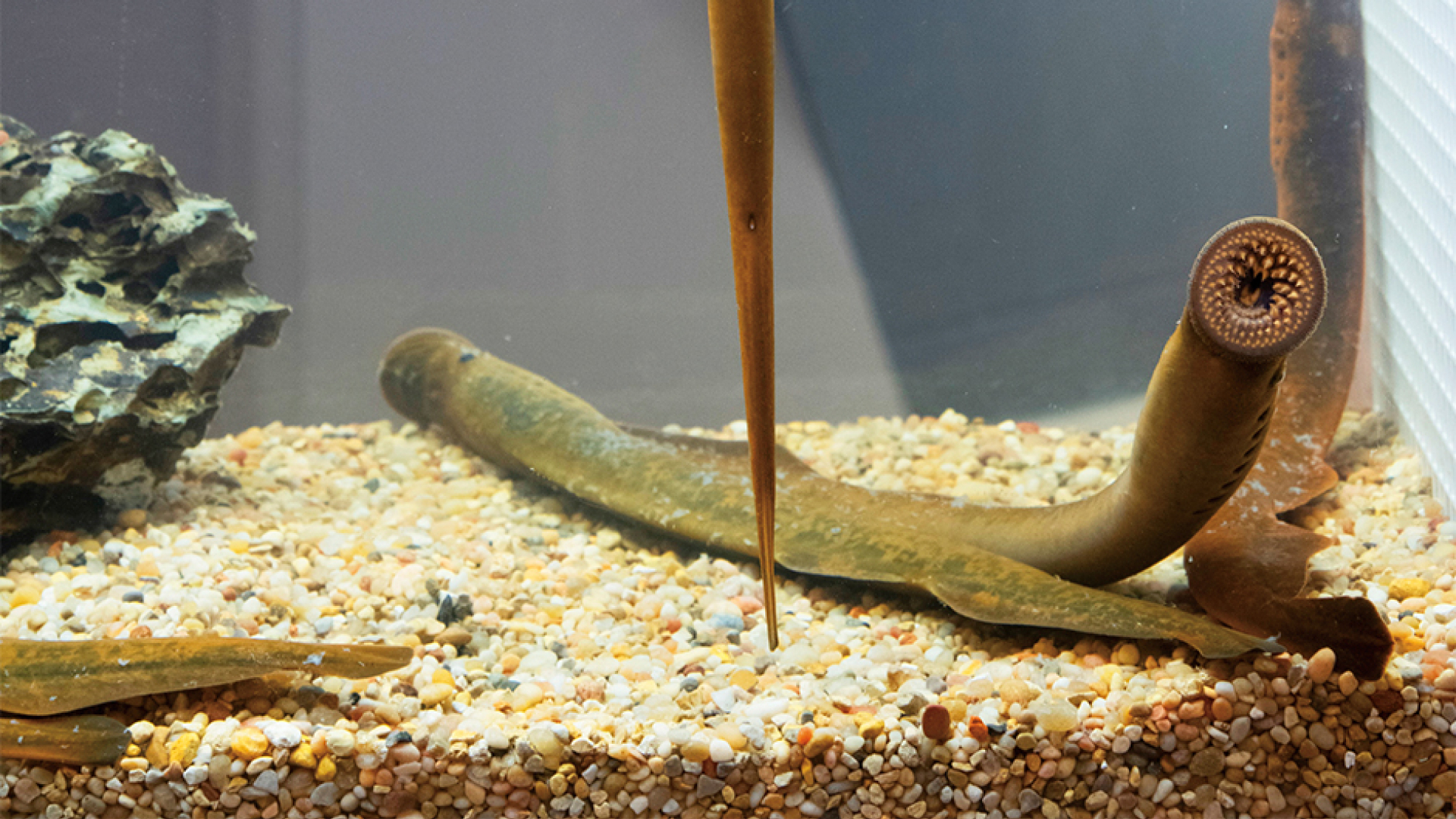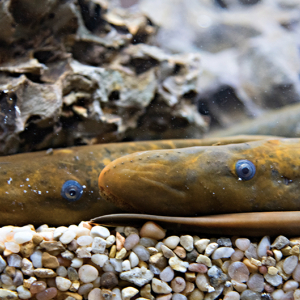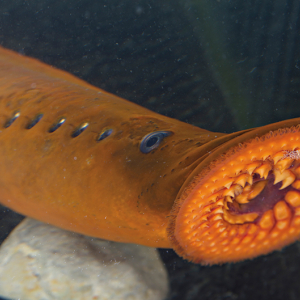Older than dinosaurs, we look at the bloodfeeding sea lampreys that have survived four major extinction periods
Perhaps one of the least known, but most frightening, species of fish in Ontario fresh-waters is the sea lamprey. With a sucking mouth full of pointed teeth, it can inflict serious damage by sucking blood from its unsuspecting host. But what do we know about these unique fish?
Lampreys belong to a group of fishes known as cyclostomes, or round mouths. They live in temperate regions of the world, preferring water temperatures below 20 C. They tolerate both fresh and salt water and have been found at depths of over 4,000 metres. Truly a group of fishes that are adept at survival, lampreys evolved more than 400 million years ago and lived through four major extinction periods. They are among the first backboned animals to have evolved on Earth, and are often called “living fossils” since their body structure has changed very little over millions of years.
Lampreys are often erroneously thought to be invertebrates (animals without backbones) or, more commonly, eels. Although lampreys have a simple eellike body shape, they lack many typical characteristics of eels and other fishes, such as upper and lower bony jaws, scales on the body, and pectoral and pelvic fins. Like another more familiar ancient group of fishes, the sharks, lampreys have a skeleton made of cartilage rather than bone, and have external gill openings for respiration. This simplified body plan has served them well.
Of the 38 species of lampreys worldwide, only 18 are parasitic. Some species, such as the American brook and northern brook lampreys found in Ontario streams, feed only as larvae and do not feed at all as adults. The sea and silver lampreys, also found in Ontario, feed on blood as adults and secrete an anticoagulant to ensure a continuous flow of blood from the host. Other parasitic lampreys have robust teeth, feeding on muscle from the host’s flank and even digesting internal organs.
The sea lamprey’s sharp teeth rasp through the skin and scales of fishes to suck on blood.
Lamprey (left): Photo by Brenna Wells. Lamprey (right): Photo by Tina Weltz.
Another unique feature of lampreys is their life cycle. While most fishes have a typical egg, larvae, juvenile, adult life cycle, lampreys are more complex. Adults spawn in streams in the spring. Males build nests by moving stones with their sucker mouths to form a depression in the streambed. Females release up to 150,000 tiny eggs into the nest, which are fertilized by males. Both females and males die after spawning. The eggs hatch and larvae drift downstream to quiet waters, where they bury all but their heads into the sandy bottom. There they remain for up to eight years, feeding on drifting microscopic plant and animal life. Larvae then go through a metamorphosis, developing eyes and a sucking mouth full of teeth—150 in all. While some lamprey species stay in streams, others migrate downstream to lakes or oceans and begin a parasitic life phase, attaching to host fish species. This adult stage lasts for less than two years, which is very strange since their larval stage lasts up to eight years! Parasitic lampreys then release from their hosts and return upstream to spawn.
The sea lamprey, while living in its native range in the Atlantic Ocean and Mediterranean Sea, has co-evolved with other native species and does not cause destruction in these ecosystems. However, when it gained access to Lake Erie in 1921 via shipping canals built to bypass Niagara Falls, catastrophic declines occurred in native fish populations that were not accustomed to this new bloodsucker. Invasion was rapid, with sea lamprey spreading to all Great Lakes by 1938. The invasion was catastrophic not only to Great Lakes fishes but also to the people who depended on the fishery. The Great Lakes commercial, recreational, and tribal fishery is valued at more than $7 billion annually and supports over 75,000 jobs in Canada and the U.S. Fish species such as trout, salmon, and whitefish were heavily affected by parasitic sea lamprey. Today, the sea lamprey population is controlled and regulated by the Great Lakes Fishery Commission, a joint Canada–U.S. agency. Ongoing efforts of this agency—lampricides, barriers, traps and sophisticated sensory cues—have resulted in a 90% reduction in most areas.
Come and see our Great Lakes vampires at the ROM’s Bloodsuckers: Legends to Leeches exhibition. And remember, however gruesome you may think lampreys look, these are “living fossils” and have been on our planet much, much longer than even dinosaurs.



